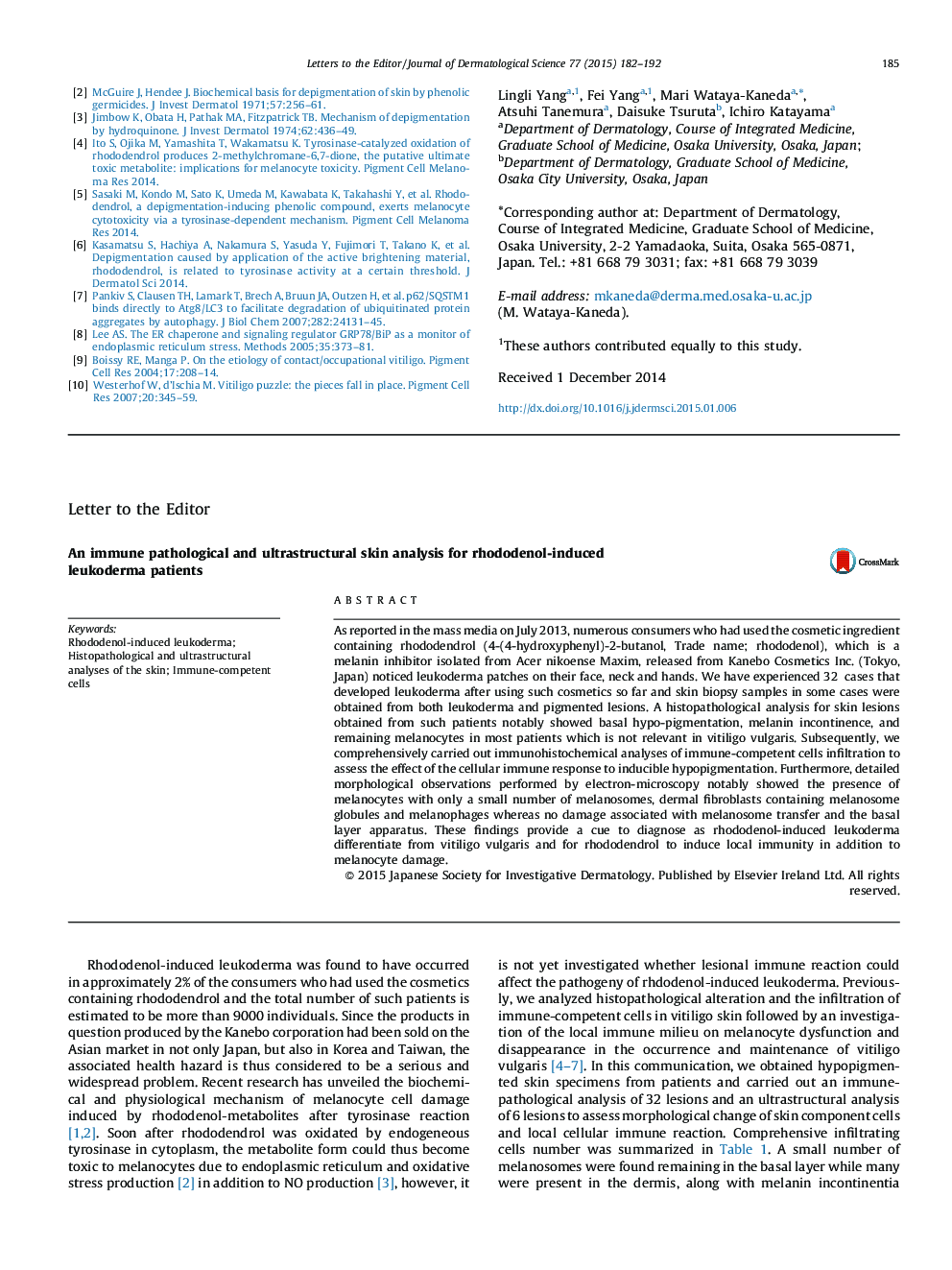| Article ID | Journal | Published Year | Pages | File Type |
|---|---|---|---|---|
| 3212827 | Journal of Dermatological Science | 2015 | 4 Pages |
As reported in the mass media on July 2013, numerous consumers who had used the cosmetic ingredient containing rhododendrol (4-(4-hydroxyphenyl)-2-butanol, Trade name; rhododenol), which is a melanin inhibitor isolated from Acer nikoense Maxim, released from Kanebo Cosmetics Inc. (Tokyo, Japan) noticed leukoderma patches on their face, neck and hands. We have experienced 32 cases that developed leukoderma after using such cosmetics so far and skin biopsy samples in some cases were obtained from both leukoderma and pigmented lesions. A histopathological analysis for skin lesions obtained from such patients notably showed basal hypo-pigmentation, melanin incontinence, and remaining melanocytes in most patients which is not relevant in vitiligo vulgaris. Subsequently, we comprehensively carried out immunohistochemical analyses of immune-competent cells infiltration to assess the effect of the cellular immune response to inducible hypopigmentation. Furthermore, detailed morphological observations performed by electron-microscopy notably showed the presence of melanocytes with only a small number of melanosomes, dermal fibroblasts containing melanosome globules and melanophages whereas no damage associated with melanosome transfer and the basal layer apparatus. These findings provide a cue to diagnose as rhododenol-induced leukoderma differentiate from vitiligo vulgaris and for rhododendrol to induce local immunity in addition to melanocyte damage.
